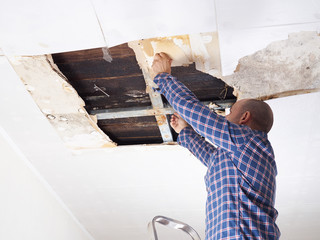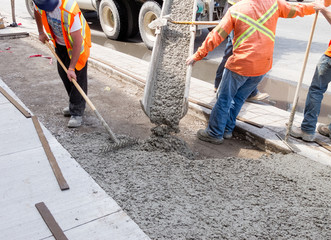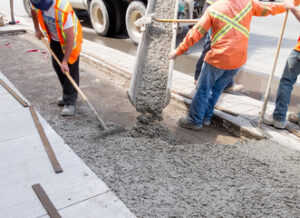Occasionally, small holes, like those caused by doorknobs, may occur on the walls of your home. These minor blemishes can be easily touched up with spackle and then lightly sanded before painting.
 For larger dents and holes, a patch should be cut to size and then screwed into place. It is important to use proper technique when taping and mudding Drywall Repair Las Vegas.
For larger dents and holes, a patch should be cut to size and then screwed into place. It is important to use proper technique when taping and mudding Drywall Repair Las Vegas.
Patching
The simplest and most common type of drywall repair involves patching holes. Small holes can be patched with joint compound and a putty knife, but medium and large holes require a new piece of drywall to replace the damaged section. Before attempting any patching, make sure the hole is clean and dry. You will want to remove any loose drywall debris, as well as any dirt or dust that may be trapped in the hole.
If the area around the hole is rough, lightly sand or scrape it to create a smooth surface before applying the patch. It is also important to ensure that any hidden electrical cords are not cut during this process. It is a good idea to wear rubber gloves while working on any surface that will be exposed to moisture.
Small patches can be completed with a spackle or a lightweight joint compound. Apply a thin coat to the patch and surrounding drywall, using your putty knife to smooth the surface. Once the patch is smooth, you can feather the edges to help the patch blend in with the wall. You can also use fine-grit sandpaper to sand the patch and surrounding drywall to remove any blemishes and to prepare the area for painting.
A drywall patch kit contains everything you need to quickly repair a small hole, including a self-adhesive mesh patch that sticks to the wall and covers the hole. This type of patch is quick and easy to install, but it does not provide as strong a repair as a new piece of drywall.
When fixing a larger hole, you will need to cut a replacement piece of drywall and attach it to the wall with drywall screws. To prevent the new drywall from collapsing into the hole, you should brace the drywall with wood backing strips that are screwed into the wall on both sides of the opening. The drywall patch and the new drywall should then be taped and covered with a thin layer of mud, or joint compound, and allowed to dry before being sanded and painted.
Repairing Large Holes
While it may seem like a daunting task, repairing large holes in drywall is fairly straightforward, if you take your time. It requires a little more preparation than small holes, but with the right tools and materials, it is doable for even a beginner. However, if you’re concerned about surrounding electrical wires, plumbing, or extensive cracking, it’s probably best to call in a professional.
For a hole the size of a doorknob or larger, you will need more than just a patch kit. To make a solid repair, you will need to brace the hole and install a replacement piece of drywall. To do this, first square the hole with a framing square and pencil, then cut along those lines with a drywall saw. Next, remove any chipped paint and sand the area smooth. This will help the drywall patch and your subsequent mud job hide the hole from view.
Once the hole is prepared, you will need to frame the entire opening with plywood strips, drywall screws and mesh joint tape. Then cut a piece of drywall to fit the hole, making sure to leave less than a 1/2-inch gap all the way around. Position the drywall patch over the hole and screw it to the backing strips, using a drill with a masonry bit for best results. Screw in the patch at both left and right edges of the hole, then apply a coat of drywall compound over the patch and seams. Let the compound dry overnight, then sand until smooth.
The final step is to prime and paint the patched area. It may take several coats of paint, but the result will be a patched area that is almost impossible to identify. Be careful not to nick any wiring or pipes as you work, and don’t cut away any drywall that might be covering these objects, or you could find yourself with an expensive and lengthy repair bill. Also, be sure to run your hands over the surface of the patch to ensure it feels smooth and blends in with the wall before you call it a day.
Repairing Cracks
Small cracks and dents in drywall are usually easy to repair with a spackle or a lightweight joint compound. You may also want to paint the area, as the new color can hide the patch and make the wall look more even. For larger holes, you can buy a drywall patch kit that has an adhesive surface. This will help prevent the patch from collapsing into the hole once it dries. Before applying the patch, sand or scrape the edges of the hole to be sure it is smooth and will sit flush against the wall.
Drywall is much more durable than plaster, but cracks still occur in walls built with drywall. Wall cracks are most common at seams, where two sheets of drywall meet. They can be caused by structural problems or simply settling in the house. If the cracks are extensive or in a doorway, they may be due to a problem with the foundation of the home and require immediate professional attention.
Use a utility knife to widen the crack to about 0.64cm (1/4 inch) at both ends of the damage (Image 1). If there is a lot of dirt or debris in the crack, vacuum it out. This will allow the gap filler/sealant or drywall compound to get into the crack more effectively and reduce future cracking.
If the crack extends through the paper tape on a seam, or the tape is pulled loose from the wall surface, use a utility knife to cut the tape away from the wall. This will remove any old compound that is causing the crack and prepare the area for repair.
Once the crack has been widened, use a putty knife to apply a layer of spackle or joint compound to the area, covering the entire crack. Let the drywall compound dry completely before proceeding, checking the manufacturer’s directions to see how long it will take for the compound to be ready for sanding and painting.
After the spackle or joint compound has dried, add a second layer, if needed, using the same technique. Once the second coat of compound is dry, sand the area until it is smooth and feathered with the surrounding wall. Then apply a final coat of topping mud, again, making it as smooth and trowel-mark-free as possible.
Repairing Surface Defects
Many homeowners are confronted with drywall damage. Sometimes it’s a minor issue like a popped nail head, other times it’s a larger problem like a crack or hole caused by water leakage or even structural issues from a shifting foundation.
Whether your drywall needs to be patched, repaired, or replaced will depend on the severity of the damage and your skill level as a do-it-yourselfer. Small holes, dings, and scrapes can be patched with a bit of spackle and a putty knife. You can purchase a drywall patch kit, which will include all the tools you need for this project. Place the patch over the damaged area, then spread a layer of joint compound over the patch and around the edges. Smooth the compound with a sanding tool and feather the edges to blend it into the wall. You can then repaint the area or have a painting service do it for you.
Cracks in your walls are usually a more serious problem and require professional attention. To repair a crack, start by cleaning the area and widening the crack slightly to approximately 0.64cm (1/4 inch). This will ensure that the gap filler or compound will be able to hold properly. Next, clean the crack and wipe it down with a damp cloth to remove any dirt or debris that can cause problems later on.
Once the crack is cleaned, use a putty knife to apply a thin coat of the gap filler and let it dry thoroughly. After the gap filler is fully dried, you can sand it with 220-grit sandpaper to prepare it for the next step. Now, apply a second coat of the gap filler and sand it again until it is smooth.
Once your patch is dry, it’s time to sand it down and apply a final layer of joint compound. After that, you can sand it again until it is smooth and ready for paint. If you are having a painting company repaint the area, be sure to prime the patch before they begin work to prevent the new coat of paint from sticking to the patch and showing up later on.


 Formwork is a framework that holds wet concrete until it sets, creating the shape of a structure. It can be permanent or temporary, and concrete contractors need to design a formwork system that balances quality, cost and safety. Formwork can be a major source of stress on construction sites and may need to be reinforced and braced to prevent collapse or damage to the concrete.
Formwork is a framework that holds wet concrete until it sets, creating the shape of a structure. It can be permanent or temporary, and concrete contractors need to design a formwork system that balances quality, cost and safety. Formwork can be a major source of stress on construction sites and may need to be reinforced and braced to prevent collapse or damage to the concrete.